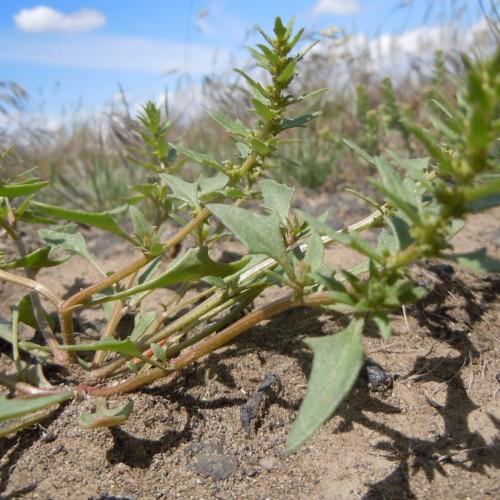
Nuttall's Povertyweed
Blitum nuttallianum
Watering:
Frequent
Hardiness Zone:
Sun:
full sun,part shade
Leaf:
Yes
Growth Rate:
Low
Drought Tolerant:
Yes
Salt Tolerant:
Yes
Invasive:
Yes
watering
Water strawberry-blite (Blitum capitatum) once per week, using 1-2 liters of water per plant. Water deeply and thoroughly to ensure that the soil is thoroughly soaked. Water in the early morning before the heat of the day reaches the plant so that the foliage is not wet for long periods of time. Water around the base of the plant, avoiding wetting the leaves as this encourages fungal diseases. Make sure to always water the plant at the same time every week for consistent watering.
sunlight
Strawberry-Blite (Blitum capitatum) typically needs full sun, at least 6 hours of direct sunlight daily, to grow and produce fruit. Plant this species in an area where it will receive direct sunlight throughout the day for the best results. When direct sunlight is not available, it can still grow but will not produce as many fruits. It likes to have warmth and should be planted in late spring or early summer for the best harvest.
pruning
Strawberry-Blite should be trimmed in mid-to-late spring after its first flowering period has ended. Pruning should be minimal, removing any dead, damaged, or diseased branches. Healthy shoots should be trimmed back to just above a bud to promote further growth and flowering. To maximize the yield of edible fruit, it may be beneficial to prune out certain parts of the plant that are not fruiting well. If the leaves are beginning to look lanky and sparse, a more drastic pruning may be necessary. This will stimulate the plant to re-shoot and produce more vigorous and abundant foliage.
